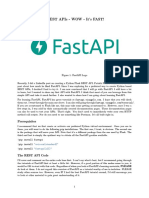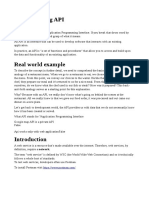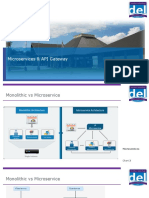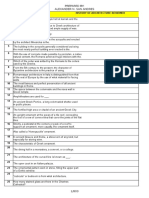0% found this document useful (0 votes)
59 views18 pagesMiR API Features Rev02 - en
The document outlines various API features including whitelisting, sorting, pagination, searching, and batch processing. Each section provides definitions, usage instructions, and general use cases for effectively utilizing these features in API requests. The document serves as a comprehensive guide for developers to enhance data retrieval and management through the API.
Uploaded by
akkala vasudevCopyright
© © All Rights Reserved
We take content rights seriously. If you suspect this is your content, claim it here.
Available Formats
Download as PDF, TXT or read online on Scribd
0% found this document useful (0 votes)
59 views18 pagesMiR API Features Rev02 - en
The document outlines various API features including whitelisting, sorting, pagination, searching, and batch processing. Each section provides definitions, usage instructions, and general use cases for effectively utilizing these features in API requests. The document serves as a comprehensive guide for developers to enhance data retrieval and management through the API.
Uploaded by
akkala vasudevCopyright
© © All Rights Reserved
We take content rights seriously. If you suspect this is your content, claim it here.
Available Formats
Download as PDF, TXT or read online on Scribd
/ 18
























































































